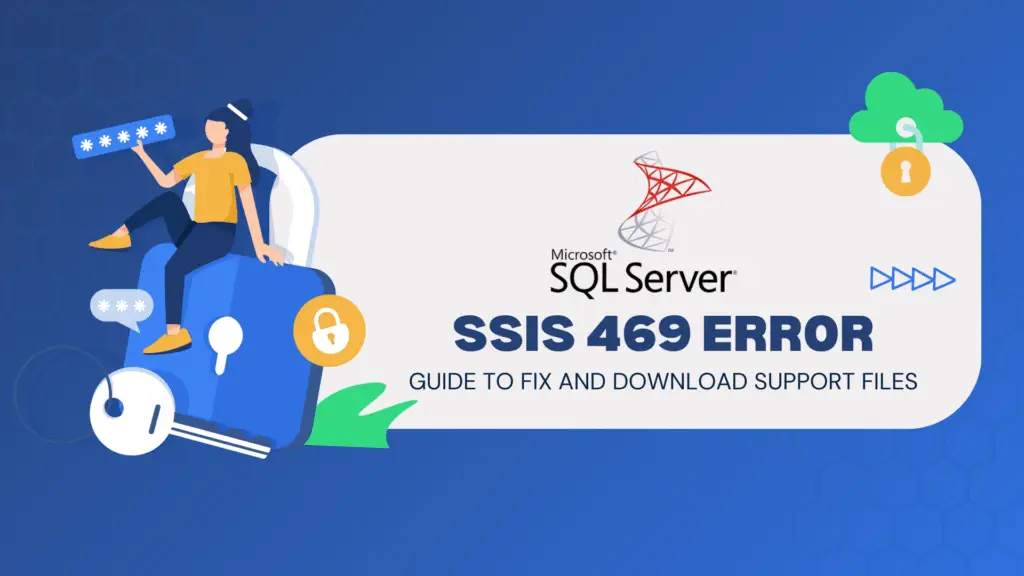SSIS 469 Error – Complete Guide to Fix and Download Support Files
If you’ve spent any time working with SQL Server Integration Services (SSIS), you already know that errors are part of the job. One error that troubles many developers is SSIS 469. If you have faced it, you know how frustrating it is to see a working package fail without a clear reason.
This article gives you a practical explanation of the error, why it appears, and step-by-step methods to solve it. I will also explain search terms like “SQL Server Integration Services 469 download,” “SQL Server Integration Services 469 solve error,” “SQL Server Integration Services 469 jav,” and “ssis-469 uncensored,” since many users look for them online.
What is SSIS 469?
SSIS 469 is a package error code. It appears when SSIS cannot complete a task in your project. The message often shows up during:
- Data migration between two different servers
- Running packages after an SQL Server update
- Importing large files into a database
- Using third-party drivers with SSIS
- Think of it as SSIS telling you, “Something in this package does not match.” The challenge is identifying the broken piece.
Common Reasons Behind SSIS 469
From experience and what SQL developers report in forums, these are the usual causes:
- Driver mismatch—When you move data from Excel, Oracle, or MySQL, missing or old drivers often trigger the error.
- Corrupted package—When you move SSIS packages from one server to another, the XML inside the package sometimes breaks.
- Data type conflicts—If the source sends “nvarchar” but the destination expects an “int,” SSIS cannot complete the transfer.
How to Fix SSIS 469
If you are looking to have Integration Services 469 solve the error, start with these steps:
Update drivers:
Check if you are pulling from Excel, Oracle, or DB2. Install the latest OLE DB or ODBC drivers.
Verify Connection:
Open SSIS Designer, test every connection manager, and confirm login details.
Match Data Types:
Compare source and target columns. Use Data Conversion if types don’t align.
Enable Logging:
Turn on package logging. The log shows the exact task where error 469 occurs.
Apply SQL Updates:
Install service packs and cumulative updates.
If an older package fails, delete the broken tasks and recreate it.
Following these steps usually resolves the error in less than a day.
SSIS 469 Download
When people search for SQL Server Integration Services 469 download, they are usually looking for:
- Microsoft patches or cumulative updates
- Driver packages like SQL Server Native Client or Access Database Engine
- Scripts or tools that repair corrupted SSIS packages
- Always use Microsoft’s official site or trusted vendors. Avoid random file-sharing sites, as they are unsafe.
- You might see search terms like “SQL Server Integration Services 469 jav” or “ssis-469 uncensored.” These are unrelated to SQL Server. They appear in search trends but lead to unrelated content.
- If you’re serious about fixing SQL Server Integration Services 469, skip such links. The best option is to check Microsoft Learn, SQL Server blogs, or Stack Overflow, where developers share real solutions.
Real-World Example
One finance company faced SSIS 469 after upgrading to SQL Server 2019. Their daily Excel-to-SQL import package failed every morning.
At first, the team tried quick fixes, but the error returned. After deeper checks, we realized the server didn’t have the 64-bit Excel driver installed. Without it, the package couldn’t process the files. Installing the updated Microsoft Access Database Engine driver solved the issue.
This shows how SQL Server Integration Services 469 often comes from a hidden but simple cause. Instead of rebuilding the package, focusing on drivers and data type checks saved both time and resources.
How to Avoid SSIS 469 in the Future
From experience, this error keeps coming back if you don’t follow basic practices:
- Keep a log of all drivers and versions.
- Use consistent data types between source and destination.
- Make backups of SQL Server Integration Services packages before moving to a new SQL Server version.
- Write simple notes about each package—its sources, destinations, and transformations.
- These small habits save hours when something breaks.
Closing Note
When you’ve faced SSIS 469 a couple of times, you begin to realize that it isn’t some mysterious, unsolvable problem.
And honestly, the fix is rarely as complicated as it feels in the beginning. Many times, it’s just about installing the correct version of a driver, adjusting folder permissions so SSIS has access, or changing a column type so both systems are speaking the same language. What makes it tricky is not the complexity but the patience it demands. Debugging SSIS isn’t a quick sprint—it’s more like slowly peeling back layers until the actual cause shows itself.



